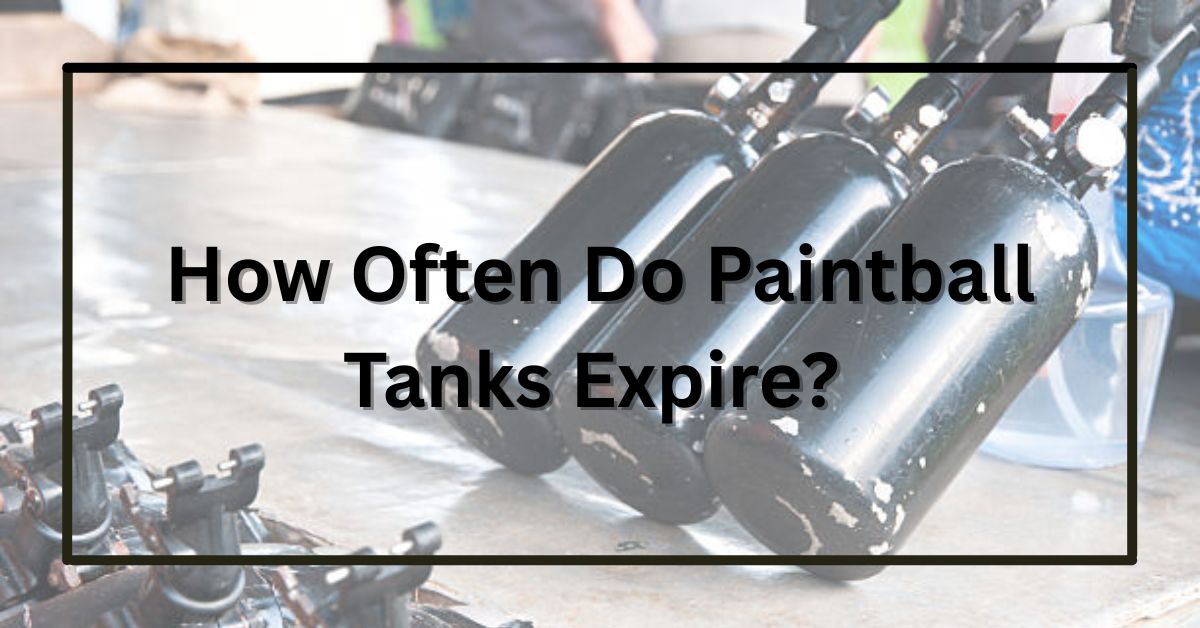If you’re a paintball enthusiast, you know that your gear needs to be reliable every time you step on the field. While most players focus on markers, loaders, and masks, one critical piece of equipment often gets overlooked—the paintball air tank.
Without a properly functioning air tank, your marker won’t be able to fire, and more importantly, you could be putting yourself and others at risk.
This leads to an important safety question: how often do paintball tanks expire? Let’s discuss it in detail.
Understanding Paintball Tank Expiration
When people say a paintball tank “expires,” they’re usually referring to its hydrostatic test date or its overall lifespan.
- Hydrostatic testing (hydro test): A mandatory pressure test to ensure the tank is still safe to use.
- Expiration date: The end of the tank’s certified usable life, after which it can no longer be legally or safely used.
Every paintball tank has these dates stamped on the cylinder, and ignoring them could result in a dangerous failure on the field.
Types of Paintball Tanks and Their Lifespan
Not all paintball tanks are the same. Their expiration period depends on the material and the pressure rating.
A. CO₂ Tanks
- Usually made of aluminum or steel.
- Require hydro testing every 5 years.
- Can often be recertified multiple times, meaning they last much longer than composite tanks.
B. HPA (High-Pressure Air) Tanks
There are two main types of HPA tanks:
- Aluminum HPA Tanks
- They are similar to CO₂ tanks in construction.
- Require hydro testing every 5 years.
- Can remain in service for indefinite periods as long as they pass hydro testing.
- Carbon Fiber Wrapped HPA Tanks
- Lightweight and preferred for competitive paintball.
- Require hydro testing every 5 years.
- Have a maximum service life of 15 years from the manufacture date.
- After expiration, they cannot be recertified or used.
C. Lifespan Comparison
- CO₂ and Aluminum HPA tanks: Long-lasting, can be retested indefinitely.
- Carbon fiber HPA tanks: Limited to 15 years, even if they pass hydro testing.
Hydro Testing and Certification
What is hydro testing?
Hydrostatic testing involves filling the tank with water and pressurizing it beyond its rated capacity to check for leaks, cracks, or weaknesses.
How Often Is Hydro Testing Required?
- Every 5 years for most paintball tanks.
- This ensures that the tank can still safely withstand high pressure.
Signs a Tank May Fail Hydro Testing
- Visible dents, deep scratches, or cracks.
- Rust or corrosion on the exterior or interior.
- Loose or damaged valves.
If your tank fails hydro testing, it cannot be used again and must be replaced or recycled.
Average Expiration Timeline
Here’s a quick breakdown of how often different tanks expire:
- CO₂ Tanks (Steel/Aluminum): Require hydro testing every 5 years but can be used indefinitely as long as they pass testing.
- Aluminum HPA Tanks: Same as CO₂ tanks, with no official end-of-life date.
- Carbon Fiber HPA Tanks: Require hydro testing every 5 years but fully expire after 15 years, regardless of condition.
For example:
- A carbon fiber tank manufactured in 2015 will expire in 2030 and cannot be used after that year.
How to Check If Your Paintball Tank Is Expired
Every paintball tank comes with key information stamped or labeled on it:
- Manufacturing date: The month and year the tank was made.
- Last hydro test date: The most recent certification.
- DOT/TC numbers: Regulatory approvals.
To check:
- Locate the stamped or printed date on the tank’s body.
- Add 5 years to see when the next hydro test is due.
- For carbon fiber tanks, check if the 15-year service life has passed.
Example: If your tank says “03/20,” it was made in March 2020. Its next hydro test will be in March 2025. If it’s a carbon fiber tank, its final expiration date will be March 2035.
What to Do With an Expired Paintball Tank
Few options if your paintball tank expires:
- Hydro Testing & Recertification
- If it’s a CO₂ or aluminum HPA tank, you can send it for hydro testing.
- If it passes, you can continue using it for another 5 years.
- Recycling
- Steel and aluminum tanks can be recycled.
- Remove the valve and take it to a scrap metal facility.
- Replace It
- If it’s a carbon fiber tank older than 15 years, replacement is your only option.
Safety Tips for Extending Tank Life
While you can’t stop expiration dates, you can take steps to keep your tank in good condition:
- Store properly:Keep tanks in a cool, dry place away from direct sunlight and extreme heat.
- Avoid physical damage: Don’t drop your tank or drag it across hard surfaces.
- Release pressure after use: Keep a small amount of air inside, but avoid storing it fully pressurized.
- Inspect regularly:Check O-rings, threads, and valves before every game.
Proper maintenance won’t stop your tank from eventually expiring, but it will reduce the chances of early damage or failure.
Conclusion:
So, how often do paintball tanks expire? Both CO₂ and aluminum HPA tanks require hydro testing every five years, but they don’t technically expire as long as they continue to pass recertification.
On the other hand, carbon fiber HPA tanks also need hydro testing every five years but have a strict 15-year service life limit, after which they can no longer be used.
This is why checking your tank’s hydro test and manufacture dates is so important—it helps ensure your safety on the field and keeps you in compliance with paintball regulations.
Remember, using an expired or untested tank doesn’t just risk damaging your gear, it also puts you and other players in danger.
Always check the stamped dates before filling or using a tank. If in doubt, replace it. Your safety is worth more than a few extra games.

